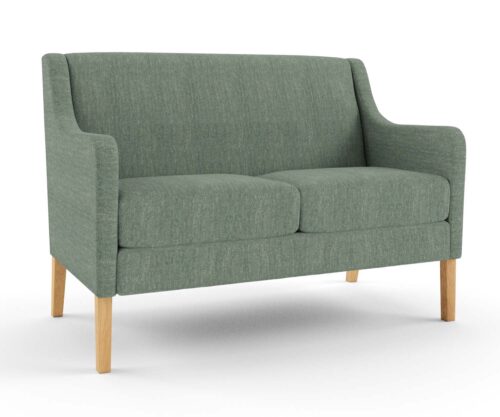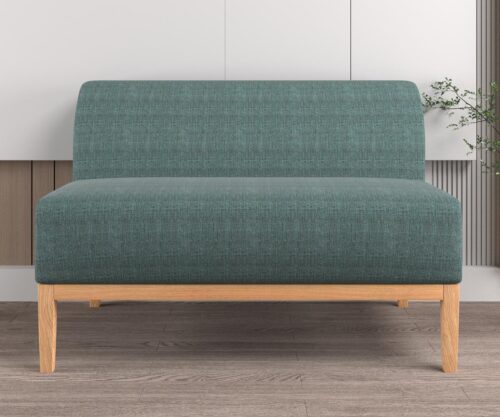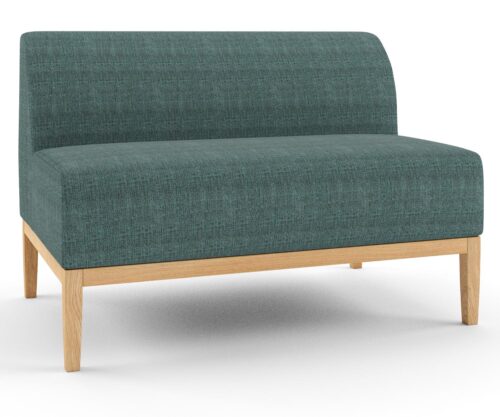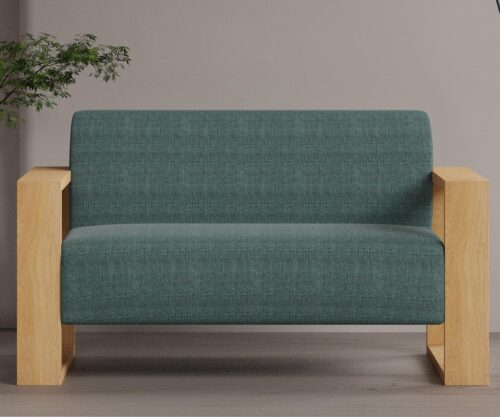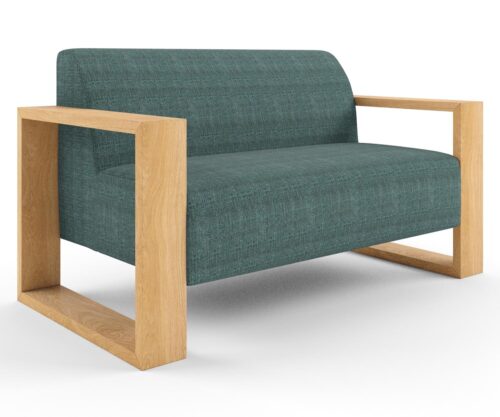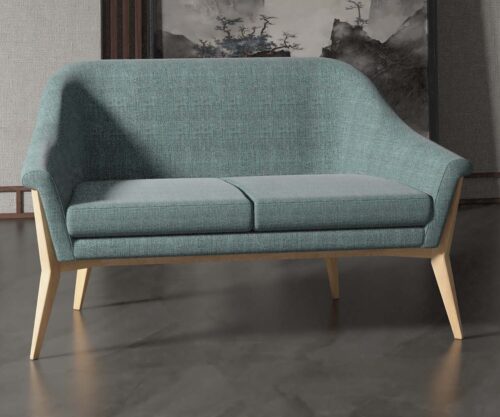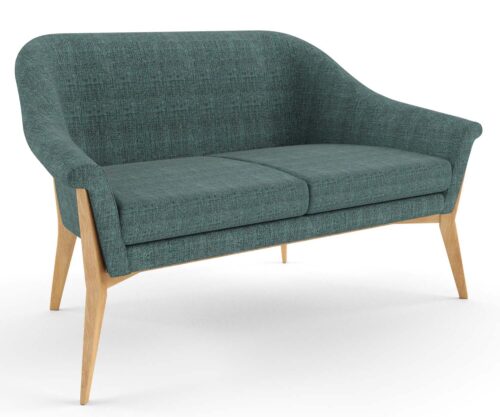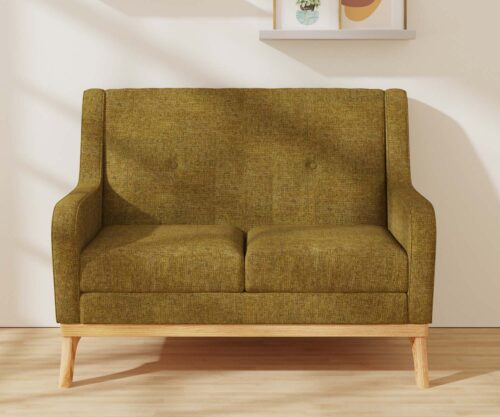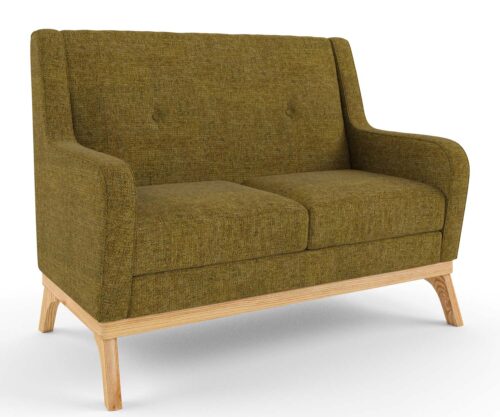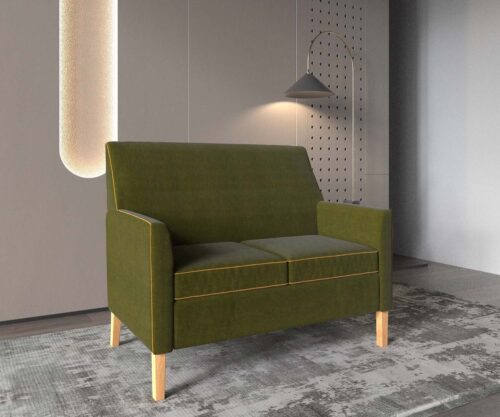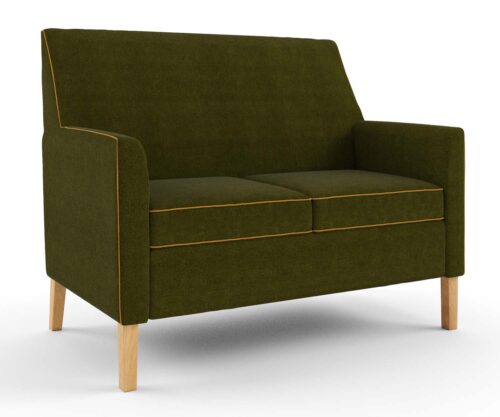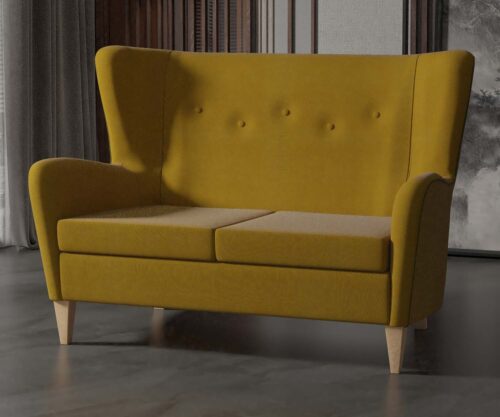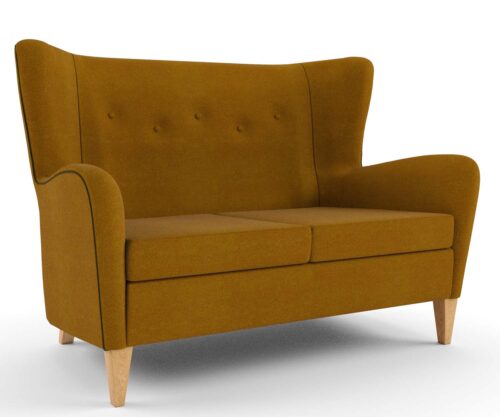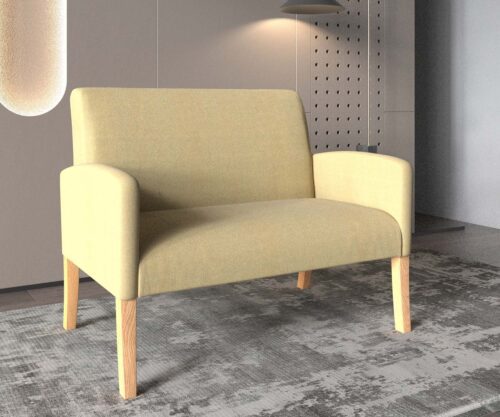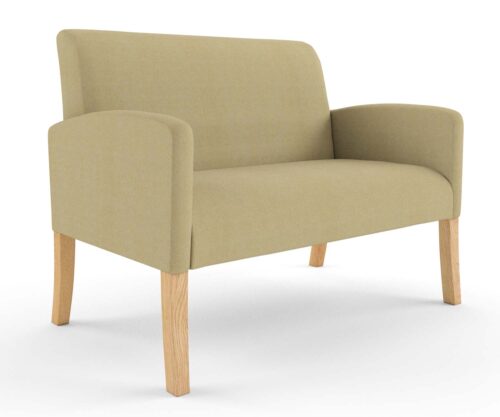8 Tips for Maintaining Assisted Living Furniture: Help With Your Asset Management Plan

As an Australian Retirement Village Manager, Procurement Manager or Aged Care Facility Manager, it’s crucial to have a comprehensive asset management plan in place to ensure the safety and comfort of your elderly residents. One essential component of your plan should be regular maintenance and updates of your assisted living furniture.
Retirement Village Asset Management Plans: Only in New South Wales… for now!
If your retirement village is in New South Wales (NSW), you will already be aware that as of 2021, the NSW Fair Trading Asset Management Plan legislation for Retirement Villages requires operators to develop and implement a comprehensive plan for managing and maintaining the assets within their village. This plan must identify all the assets within the village, such as buildings, equipment, and furniture. The plan must also outline how they will be maintained, repaired, or replaced over time. The purpose of the legislation is to ensure that retirement village operators are held accountable for the safety and wellbeing of their residents by providing them with a comfortable and secure living environment. Operators must have a system in place to monitor and review the condition of the assets within the village and provide residents with a copy of the plan upon request.
8 Tips for Maintaining Assisted Living Furniture
In this blog post, we’ll provide 8 tips for maintaining assisted living furniture to help you update your asset management plan and ensure the longevity of your furniture.
1. Conduct Regular Inspections of Assisted Living Furniture
Regular inspections are an important part of maintaining assisted living furniture in retirement villages. During these inspections, staff should check for any signs of wear and tear or damage to the furniture. This includes broken or loose joints, torn upholstery, or scratches on surfaces. They should also check that any moving parts, such as recliners or adjustable beds, are functioning properly. In addition to the physical inspection of the furniture, staff should also assess its cleanliness and hygiene. This involves ensuring that any spills or stains are promptly cleaned and that the furniture is free of any unpleasant odours. Regular inspections should be documented. Any issues or concerns identified during the inspection should be addressed promptly to ensure the ongoing safety and comfort of residents.
2. Schedule Routine Maintenance of Assisted Living Furniture
Scheduling routine maintenance can help keep your furniture in good working order. This type of maintenance typically involves more comprehensive cleaning, repair, and replacement activities, and should be carried out at regular intervals, as specified in the village’s Asset Management Plan. Scheduled routine maintenance may include tasks such as deep cleaning upholstery, polishing wooden surfaces, tightening loose screws or bolts, and replacing worn or damaged parts. Staff should also check that any safety features on the furniture, such as safety rails or non-slip mats, are in good working order. Any issues or concerns identified during scheduled routine maintenance should be addressed promptly to ensure the ongoing safety and comfort of residents, and records should be kept to track maintenance activities and ensure compliance with the village’s Asset Management Plan.
3. Follow Manufacturer Guidelines
Be sure to follow the manufacturer’s guidelines for care and maintenance of your assisted living furniture. These guidelines can help ensure that you are using the right products and techniques to keep your furniture in good condition.
4. Keep Furniture Clean
Regular cleaning of your assisted living furniture can help keep it in top condition. Regular cleaning helps to remove dirt, dust, and other contaminants that can accumulate on furniture surfaces, potentially causing discomfort or even health issues for residents. Different types of furniture may require different cleaning methods and products, so it is important to follow manufacturer recommendations and avoid using harsh chemicals or abrasive materials that can damage the furniture. For upholstery, spot cleaning spills and stains promptly can help prevent them from becoming more difficult to remove over time. Regular vacuuming or dusting can help remove surface dirt and dust, while deeper cleaning methods, such as steam cleaning, may be necessary for more heavily soiled furniture. By keeping furniture clean and well-maintained, retirement village operators can help ensure the ongoing comfort and wellbeing of their residents.
5. Train Staff on Proper Care
Proper care and maintenance of assisted living furniture should be included in staff training. Staff should be trained on the proper techniques for cleaning and maintaining different types of furniture, as well as on the appropriate use of any tools or equipment necessary for maintenance tasks. This training should cover topics such as identifying signs of wear and tear, addressing any issues or concerns promptly, and following manufacturer recommendations for care and maintenance. Staff should also be trained on proper lifting and moving techniques to avoid damaging the furniture during transport or storage. Regular training sessions can help ensure that all staff members are up-to-date on best practices for caring for assisted living furniture, helping to prolong its lifespan and ensure the ongoing comfort and safety of residents.
6. Encourage Resident Participation
Encourage your residents to take an active role in the maintenance of their furniture. This can include reporting any issues they notice and taking care of the furniture as instructed.
7. Consider Upgrades and Replacements
As your assisted living furniture ages, it may become necessary to consider upgrades or replacements. Upgrades can include adding features such as lift chairs or adjustable bed frames to make the furniture more accessible and comfortable for residents. Replacements may be necessary if the furniture is no longer functional or safe for use.
8. Work with an Australian Furniture Supplier
Partnering with a reliable Australian furniture supplier is essential for ensuring that retirement villages have access to well-maintained furniture that meets the specific needs of their residents. A reputable supplier will have extensive experience working with assisted living furniture and will be able to provide guidance and advice on the best options for your village’s unique requirements. They will also have access to high-quality furniture that is designed for durability, comfort, and safety, helping to ensure that residents are provided with the best possible living environment. Additionally, a reliable supplier will offer ongoing support and maintenance services to help keep furniture in good condition over time, including repair and replacement services as needed. By working with a trusted furniture supplier, retirement village operators can help ensure that their residents have access to safe, comfortable, and well-maintained furniture that supports their health and wellbeing.
By following these 8 tips for maintaining assisted living furniture, you can update your retirement village asset management plan and ensure the longevity and functionality of your furniture. A comprehensive asset management plan can help keep your residents safe and comfortable and improve the overall quality of life in your retirement village.
FAQs About Maintaining Furniture in Aged Care
How can I ensure the safety of furniture in an aged care environment?
Safety is a top priority in aged care. Regularly inspect furniture for any signs of wear, loose parts, or damage. Choose furniture with rounded edges and no sharp corners to minimize the risk of injuries.
What types of furniture are suitable for an aged care setting?
Furniture in aged care should prioritize comfort, durability, and ease of use. Opt for pieces with sturdy construction, easy-to-clean materials, and ergonomic designs. Furniture that meets safety standards is also essential.
How often should furniture be inspected and maintained in aged care facilities?
Regular inspections are crucial. Conduct thorough checks at least quarterly, focusing on high-use areas. Promptly address any issues such as loose screws, torn upholstery, or damaged components to ensure the ongoing safety and functionality of the furniture.
What cleaning and sanitation practices should be followed for furniture in aged care?
Clean and sanitize furniture regularly to maintain a hygienic environment. Use cleaning products recommended by the furniture manufacturer and follow any specific cleaning instructions. Pay extra attention to surfaces that come into frequent contact with hands.
Can furniture be adapted for residents with mobility challenges?
Yes, furniture can be adapted to meet the needs of residents with mobility challenges. Consider features such as adjustable height, firm armrests for support, and furniture with proper ergonomics. Consult with occupational therapists for personalized recommendations.
How can I prevent furniture-related accidents in an aged care facility?
Minimize the risk of accidents by arranging furniture in a way that allows for easy navigation and clear pathways. Use non-slip materials on floors, and ensure that furniture is stable and secure. Educate staff and residents about safe use and movement around furniture.
What measures can be taken to extend the lifespan of furniture in aged care?
Regular maintenance, prompt repairs, and careful use can significantly extend the lifespan of furniture. Avoid overloading furniture, follow manufacturer guidelines for use and weight capacity, and provide staff with training on proper handling and care.
How should residents be involved in the furniture selection process?
Involving residents in the selection process can enhance their comfort and satisfaction. Consider their preferences and needs when choosing furniture, and provide options for customization where possible. Encourage feedback to continually improve the living environment.
What should be done in case of significant damage or wear to furniture in an aged care facility?
If furniture sustains significant damage, it may need to be repaired or replaced promptly. Follow the facility’s procedures for reporting and addressing damage, and work with suppliers or maintenance professionals to resolve issues in a timely manner.
Australian Made Assisted Living Sofas
A selection of our finest assisted living armchairs made in our Brisbane furniture manufacturing facility. These fit-for-purpose chairs have been designed and built to promote the comfort and safety of elderly Australians.
More News
8 Tips for Maintaining Assisted Living Furniture: Help With Your Asset Management Plan

As an Australian Retirement Village Manager, Procurement Manager or Aged Care Facility Manager, it’s crucial to have a comprehensive asset management plan in place to ensure the safety and comfort of your elderly residents. One essential component of your plan should be regular maintenance and updates of your assisted living furniture.
Retirement Village Asset Management Plans: Only in New South Wales… for now!
If your retirement village is in New South Wales (NSW), you will already be aware that as of 2021, the NSW Fair Trading Asset Management Plan legislation for Retirement Villages requires operators to develop and implement a comprehensive plan for managing and maintaining the assets within their village. This plan must identify all the assets within the village, such as buildings, equipment, and furniture. The plan must also outline how they will be maintained, repaired, or replaced over time. The purpose of the legislation is to ensure that retirement village operators are held accountable for the safety and wellbeing of their residents by providing them with a comfortable and secure living environment. Operators must have a system in place to monitor and review the condition of the assets within the village and provide residents with a copy of the plan upon request.
8 Tips for Maintaining Assisted Living Furniture
In this blog post, we’ll provide 8 tips for maintaining assisted living furniture to help you update your asset management plan and ensure the longevity of your furniture.
1. Conduct Regular Inspections of Assisted Living Furniture
Regular inspections are an important part of maintaining assisted living furniture in retirement villages. During these inspections, staff should check for any signs of wear and tear or damage to the furniture. This includes broken or loose joints, torn upholstery, or scratches on surfaces. They should also check that any moving parts, such as recliners or adjustable beds, are functioning properly. In addition to the physical inspection of the furniture, staff should also assess its cleanliness and hygiene. This involves ensuring that any spills or stains are promptly cleaned and that the furniture is free of any unpleasant odours. Regular inspections should be documented. Any issues or concerns identified during the inspection should be addressed promptly to ensure the ongoing safety and comfort of residents.
2. Schedule Routine Maintenance of Assisted Living Furniture
Scheduling routine maintenance can help keep your furniture in good working order. This type of maintenance typically involves more comprehensive cleaning, repair, and replacement activities, and should be carried out at regular intervals, as specified in the village’s Asset Management Plan. Scheduled routine maintenance may include tasks such as deep cleaning upholstery, polishing wooden surfaces, tightening loose screws or bolts, and replacing worn or damaged parts. Staff should also check that any safety features on the furniture, such as safety rails or non-slip mats, are in good working order. Any issues or concerns identified during scheduled routine maintenance should be addressed promptly to ensure the ongoing safety and comfort of residents, and records should be kept to track maintenance activities and ensure compliance with the village’s Asset Management Plan.
3. Follow Manufacturer Guidelines
Be sure to follow the manufacturer’s guidelines for care and maintenance of your assisted living furniture. These guidelines can help ensure that you are using the right products and techniques to keep your furniture in good condition.
4. Keep Furniture Clean
Regular cleaning of your assisted living furniture can help keep it in top condition. Regular cleaning helps to remove dirt, dust, and other contaminants that can accumulate on furniture surfaces, potentially causing discomfort or even health issues for residents. Different types of furniture may require different cleaning methods and products, so it is important to follow manufacturer recommendations and avoid using harsh chemicals or abrasive materials that can damage the furniture. For upholstery, spot cleaning spills and stains promptly can help prevent them from becoming more difficult to remove over time. Regular vacuuming or dusting can help remove surface dirt and dust, while deeper cleaning methods, such as steam cleaning, may be necessary for more heavily soiled furniture. By keeping furniture clean and well-maintained, retirement village operators can help ensure the ongoing comfort and wellbeing of their residents.
5. Train Staff on Proper Care
Proper care and maintenance of assisted living furniture should be included in staff training. Staff should be trained on the proper techniques for cleaning and maintaining different types of furniture, as well as on the appropriate use of any tools or equipment necessary for maintenance tasks. This training should cover topics such as identifying signs of wear and tear, addressing any issues or concerns promptly, and following manufacturer recommendations for care and maintenance. Staff should also be trained on proper lifting and moving techniques to avoid damaging the furniture during transport or storage. Regular training sessions can help ensure that all staff members are up-to-date on best practices for caring for assisted living furniture, helping to prolong its lifespan and ensure the ongoing comfort and safety of residents.
6. Encourage Resident Participation
Encourage your residents to take an active role in the maintenance of their furniture. This can include reporting any issues they notice and taking care of the furniture as instructed.
7. Consider Upgrades and Replacements
As your assisted living furniture ages, it may become necessary to consider upgrades or replacements. Upgrades can include adding features such as lift chairs or adjustable bed frames to make the furniture more accessible and comfortable for residents. Replacements may be necessary if the furniture is no longer functional or safe for use.
8. Work with an Australian Furniture Supplier
Partnering with a reliable Australian furniture supplier is essential for ensuring that retirement villages have access to well-maintained furniture that meets the specific needs of their residents. A reputable supplier will have extensive experience working with assisted living furniture and will be able to provide guidance and advice on the best options for your village’s unique requirements. They will also have access to high-quality furniture that is designed for durability, comfort, and safety, helping to ensure that residents are provided with the best possible living environment. Additionally, a reliable supplier will offer ongoing support and maintenance services to help keep furniture in good condition over time, including repair and replacement services as needed. By working with a trusted furniture supplier, retirement village operators can help ensure that their residents have access to safe, comfortable, and well-maintained furniture that supports their health and wellbeing.
By following these 8 tips for maintaining assisted living furniture, you can update your retirement village asset management plan and ensure the longevity and functionality of your furniture. A comprehensive asset management plan can help keep your residents safe and comfortable and improve the overall quality of life in your retirement village.
FAQs About Maintaining Furniture in Aged Care
How can I ensure the safety of furniture in an aged care environment?
Safety is a top priority in aged care. Regularly inspect furniture for any signs of wear, loose parts, or damage. Choose furniture with rounded edges and no sharp corners to minimize the risk of injuries.
What types of furniture are suitable for an aged care setting?
Furniture in aged care should prioritize comfort, durability, and ease of use. Opt for pieces with sturdy construction, easy-to-clean materials, and ergonomic designs. Furniture that meets safety standards is also essential.
How often should furniture be inspected and maintained in aged care facilities?
Regular inspections are crucial. Conduct thorough checks at least quarterly, focusing on high-use areas. Promptly address any issues such as loose screws, torn upholstery, or damaged components to ensure the ongoing safety and functionality of the furniture.
What cleaning and sanitation practices should be followed for furniture in aged care?
Clean and sanitize furniture regularly to maintain a hygienic environment. Use cleaning products recommended by the furniture manufacturer and follow any specific cleaning instructions. Pay extra attention to surfaces that come into frequent contact with hands.
Can furniture be adapted for residents with mobility challenges?
Yes, furniture can be adapted to meet the needs of residents with mobility challenges. Consider features such as adjustable height, firm armrests for support, and furniture with proper ergonomics. Consult with occupational therapists for personalized recommendations.
How can I prevent furniture-related accidents in an aged care facility?
Minimize the risk of accidents by arranging furniture in a way that allows for easy navigation and clear pathways. Use non-slip materials on floors, and ensure that furniture is stable and secure. Educate staff and residents about safe use and movement around furniture.
What measures can be taken to extend the lifespan of furniture in aged care?
Regular maintenance, prompt repairs, and careful use can significantly extend the lifespan of furniture. Avoid overloading furniture, follow manufacturer guidelines for use and weight capacity, and provide staff with training on proper handling and care.
How should residents be involved in the furniture selection process?
Involving residents in the selection process can enhance their comfort and satisfaction. Consider their preferences and needs when choosing furniture, and provide options for customization where possible. Encourage feedback to continually improve the living environment.
What should be done in case of significant damage or wear to furniture in an aged care facility?
If furniture sustains significant damage, it may need to be repaired or replaced promptly. Follow the facility’s procedures for reporting and addressing damage, and work with suppliers or maintenance professionals to resolve issues in a timely manner.
Australian Made Assisted Living Sofas
A selection of our finest assisted living armchairs made in our Brisbane furniture manufacturing facility. These fit-for-purpose chairs have been designed and built to promote the comfort and safety of elderly Australians.
Commercial furniture by room
Based in Brisbane, we’re an Australian manufacturer of aged care furniture, retirement living furniture, hospital & healthcare furniture, hotel & accommodation furniture and student accommodation furniture. We also supply a range of commercial office furniture.
Discover the FHG Look Book: Your Source of Inspiration for Quality Australian-Made Commercial Furniture
- Quality Craftsmanship: See why we’ve been a trusted partner for over 25 years.
- Local Excellence: Learn how our Brisbane team ensures the highest standards.
- Inspiration and Ideas: Find innovative furniture solutions for any environment.
Don’t miss the opportunity to transform your commercial space with FHG’s expertly crafted furniture. Download the FHG Look Book today and start your journey towards exceptional design and quality.


